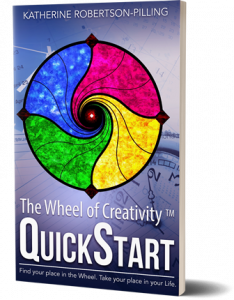
The most successful people in the world – the Elon Musks, the Richard Bransons, the Warren Buffetts – see every problem as an innovation in disguise. They seem to instinctively know how to turn problems into opportunities and opportunities into breakthroughs. So what do they do with failure?
Life is change. And innovation is the creative response to change. Getting from how-things-are to how-things-could-be is all about attitude.
What does it take to think (and act) like the world’s most innovative people?
Again and again, their own words innovators reveal four common denominators they all share.
1. MAKE FAILURE YOUR ALLY.
In a world where change is exponential, companies that become “too big to fail” ensure their eventual demise by eliminating the very resource that made them great… the fearless creativity of their people. Just think Kodak. Without the financial resources for trial-and-error, and the freedom to fail, innovation is an illusion.
According to super-innovator and Tesla and SpaceX founder Elon Musk, the greatest innovations in the world come from new companies. “Failure is an option here. If things are not failing, you are not innovating enough.”
Great minds think alike.
Microsoft founder Bill Gates factors failure his spreadsheets, “Microsoft is always two years away from failure.” Thomas Watson, Founder of IBM, quantified it: “The way to succeed is to double your failure rate.” And serial innovator Charles F. Kettering built his very success on it: “99 percent of success is built on failure.”
Hindsight is the only way to know what they mean. Today, with 32 years of self-employment behind me, I can look back on many devastating experiences with gratitude: the day I left my last corporate job to go freelance, the day I was fired from a lucrative but life-draining producing gig, the day I put all my belongings in storage because I didn’t know where to go next. Every one seemed a terrible failure at the time; every one was anything but.
Brace. Brace. Brace.
In navigation, attitude is defined as “the orientation of a craft – spacecraft or aircraft – relative to the direction of travel.” And I like that definition for life as well. Pointing yourself in the right direction is the first major step to getting where you want to go. But attitude is no antidote to failure, which is inherent in the process of innovation. Brace yourself; it’s going to be a bumpy ride.
So it’s fitting then that one of air travel’s most colorful innovators makes failure part of his strategic plan:
“My attitude has always been, if you fall flat on your face, at least you’re moving forward. All you have to do is get back up and try again.”
– Richard Branson
Steve Jobs would agree:
“Sometimes life is going to hit you in the head with a brick. Don’t lose faith.”
Whether you work within a major company, manage a startup or are a fiercely independent solopreneur, making failure your ally is your first innovative advantage.
Click here to get started today, with my 14-module video course, Reset Your Strategy for Success.
Next week… the second common denominator: Give up the good for the great.
 2. GIVE UP THE GOOD FOR THE GREAT.
2. GIVE UP THE GOOD FOR THE GREAT.
“Whenever anything is being accomplished, it is being done, I have learned, by a monomaniac with a mission.” – Peter Drucker
Richard Branson started an airline because his plane from Puerto Rico to his lover in the British Virgin Islands was cancelled. Mark Zuckerberg created the first version of Facebook to help students find hot dates. Elon Musk started Tesla to reduce global warming.
Innovators are driven to make things better, and they take risks on their journey from good to great.
What drives you? What is the issue that you just can’t accept? What problem do you absolutely have to solve? What can you just not not do? How far are you willing to take it?
Give up the good for the great
I was in the last months of my 20s when I left my advertising job with America’s first cellular service provider. We were “creating perceived need” for cell phones in people who had never needed them before; it was an exciting job at an exciting time. But for a number of reasons I knew it was not for me. When I finally surrendered to my dissatisfaction with the good, I made a leap into the void of uncertainty… inevitable if you want things to change and quite uncomfortable. Within a few months, I started a business writing and producing video programs, and I had my first client: Motorola.
Dissatisfaction… it’s a good thing
During my Motorola years, I had the privilege to work with the top 10 leaders of the corporation. They introduced me to their trademarked Six Sigma process improvement program and the concept of continual improvement. It was 1988, the year Motorola received the country’s first Malcolm Baldridge National Quality Award for performance excellence from President Ronald Reagan. The concept itself, along with proximity to some of manufacturing’s most innovative minds, changed my life. They validated my dissatisfaction with the status quo.
The Innovator knows the work is never done. Whatever can be done, can be done better. You just reach a point when you untie the rope, send out the ship and make further improvements along the way. Think Apple.
Sometimes when you innovate, you make mistakes. It is best to admit them quickly, and get on with improving your other innovations. – Steve Jobs
No matter what destination you reach, and there will be many, the Innovator in you will always be seeking another.
Innovators don’t complain
Admitting what is not okay with you can be stressful.
Innovators use dissatisfaction creatively. Admitting this level of dissatisfaction with the status quo may make you restless, but it will also connect you with the possibilities in every problem if you respond creatively.
Letting go of the Good in your life – and your business – is always a risk, a leap, even when it’s calculated. How far can you push it before it breaks? But in a world of constant change it’s the only way forward.
Creativity is the world’s greatest natural resource. And innovation is the creative response to change. The second common denominator in the Innovator’s Attitude is to give up the Good for the Great.
 3. TO BE DISRUPTIVE, STEER BY YOUR INNER COMPASS.
3. TO BE DISRUPTIVE, STEER BY YOUR INNER COMPASS.
The only way to create something that has never been done before is to think what people have never thought before; creating new solutions requires you to see old problems in new ways. But to see what no one else can see is a lonely place to be. So you need an inner compass – a connection to something deeper or higher, a knowing so strong that when the 141st person has rejected your idea you have the will to keep going.
Steering by your inner compass.
Companionship is a luxury here. Though you may have a strong team around you there’s often no one to ask the hard questions; you have to figure things out yourself. So to be an Innovator is a solitary role.
But loneliness and solitude are two different things. So the first task is to get familiar with solitude and to make space for it in your week, which can be your hardest job when there is so much else to do.
Finding your inner compass in solitude.
And it is a workout. The practice of being builds creative muscles that all the doing in the world will not. They are the muscles of reflection and receptivity.
- Solitude awakens awareness. The quality of your thoughts determines the quality of your life. You can’t stop a thought from drifting by but you can control which ones you invite in and entertain. Only in silence can you truly know the kinds of thoughts you’re entertaining. Just this awareness can change your course.
- Solitude develops your intuition. Intuition is your direct connection with the source of all ideas, whatever you consider that to be. True innovators know that they are part of something greater than they are. They learn to make decisions by tuning into what they know. Over time, this trains them to trust the process when they can’t yet see the result. Intuition. “”Intuition will tell the thinking mind where to look next.” – Jonas Salk
- Solitude enhances strategic thinking. Successful innovators work on their business rather than in their business. If you’re so busy managing or worse executing all the details of your business you have no time to steer the ship – to think long-term, strategically from the high-level vision that only you have. “If you want small changes in your life, work on your attitude. But if you want big and primary changes, work on your paradigm.” – Stephen Covey
Steering by your inner compass requires you to…
- Choose your compass. What gives you a sense of direction will not be the same as your mate.
- Use your compass to set your course. Make time and space every day for the tough questions in your life and business.
- Validate your course with outside sources. Once you have an answer, do your research to explore the possibilities on paper, where risk is minimal.
- Take controlled action. When you’ve done your homework, trust what you know, set manageable limits and take confident action.
Only when you shift the basis for your decisions from what you see around you to what you know inside will you be able to do new and different things. Only then will you be able to disrupt your industry. And only then will you ensure your personal success and the commercial viability of your business.
“You can’t connect the dots looking forward; you can only connect them looking backwards. So you have to trust that the dots will somehow connect in your future. You have to trust in something—your gut, destiny, life, karma, whatever. This approach has never let me down, and it has made all the difference in my life.” – Steve Jobs
Take time to reflect. Without a clear sense of direction it’s easy to get lost.
 4. DOING TRUMPS THINKING, BUT THINKING COMES FIRST.
4. DOING TRUMPS THINKING, BUT THINKING COMES FIRST.
Elon musk is one of the most disruptive thinkers of our time, and yet when he describes his day, he says this:
“I don’t spend my time pontificating about high-concept things; I spend my time solving engineering and manufacturing problems.”
It’s clear. Innovation is about doing. The actions you take in the world determine the legacy you will leave. Whether that is seeing your children grow into productive influencers in society or delivering your product to fill a gap in the market, your actions lay your path.
- For the artist, doing is showing up in the studio every day and making art.
- For the business person, it is planning the work and working the plan.
- For the innovator, it is solving problems strategically… and never giving up.
“Innovation is the specific instrument of entrepreneurship…the act that endows resources with a new capacity to create wealth.” ― Peter F. Drucker
Thinking comes first.
You have your own personal and professional problems to solve. Yes, that is the challenge (and the gift) of Life. So think about it. The problems that speak to you most – the ones you cannot not solve – reveal to you your niche. Your unique, creative responses to those problems are solutions you can potentially sell. If you design all your products and services to help other people solve their problems, you will have loyal customers for life. And how well you do that determines your bottom line.
How relevant are you?
- How many people have your problems (i.e., need your solutions)?
- How well do your products solve their problems?
- How many people know about you, like you and trust you enough to choose you?
I, along with thousands of other talented creatives, gifted coaches and ambitious entrepreneurs, have tried to find a workaround for this. We all want to monetize our passion, but few are willing to do the required work. We would rather hold onto our fantasies than sacrifice them on the altar of reality.
Doing is hard, and it has to be strategic to be effective.
“If you’re co-founder or CEO, you have to do all kinds of tasks you might not want to do… If you don’t do your chores, the company won’t succeed… No task is too menial.” – Elon Musk
But the good news is…
Doing is a process.
The Wheel of Creativity breaks down that process into clear steps. The Wheel is not a How-To Manual; it is a Compass. It helps you identify where you are, clarify where you want to go, and determine for yourself the direction you need to take from here to there. I don’t tell you what you need to do to solve your problem; I show you how to think about your situation and create the solution that fits for you.
Because the Wheel is such a personalized solution, it’s not an easy sell. To be perfectly honest, I’ve struggled to do the things I’m sharing with you here. And through my struggle – and the mistakes I’ve made – I’ve learned what doesn’t work (the hard way), and that has driven me (kicking and screaming at times) to what does.
Before you get busy doing, make time for thinking. Understand your problem, your niche, your business well enough to lay out your success strategy.
CULTIVATE THE INNOVATOR’S ATTITUDE
- Make failure your ally.
- Give up the good for the great.
- Steer with your inner compass.
- Think before you do, but then do it.
The Innovator’s attitude is not about branding or marketing. It is not about perfection. The Innovator’s attitude is the commitment to questioning the status quo, the devotion to making life better in your own unique way, and the courage to change the things you can change. It is the actions you take.
“The best way to predict the future is to create it.” – Alan Kay
Get busy. But get clear first.
 Special offer: QuickStart eBook
Special offer: QuickStart eBook
To get really clear about what’s not okay with you and how to transform it in your business and life, learn to navigate with the Wheel of Creativity. To get started, download the Wheel of Creativity QuickStart ebook for free here.
Katherine Robertson-Pilling is an international strategic creativity trainer, innovationist, entrepreneur, author and coach. Using her proprietary innovation framework – The Wheel of Creativity® – she trains entrepreneurs, business leaders coaches and creatives of all persuasions to integrate creative thinking with strategic action for extraordinary and meaningful results in life and business.
